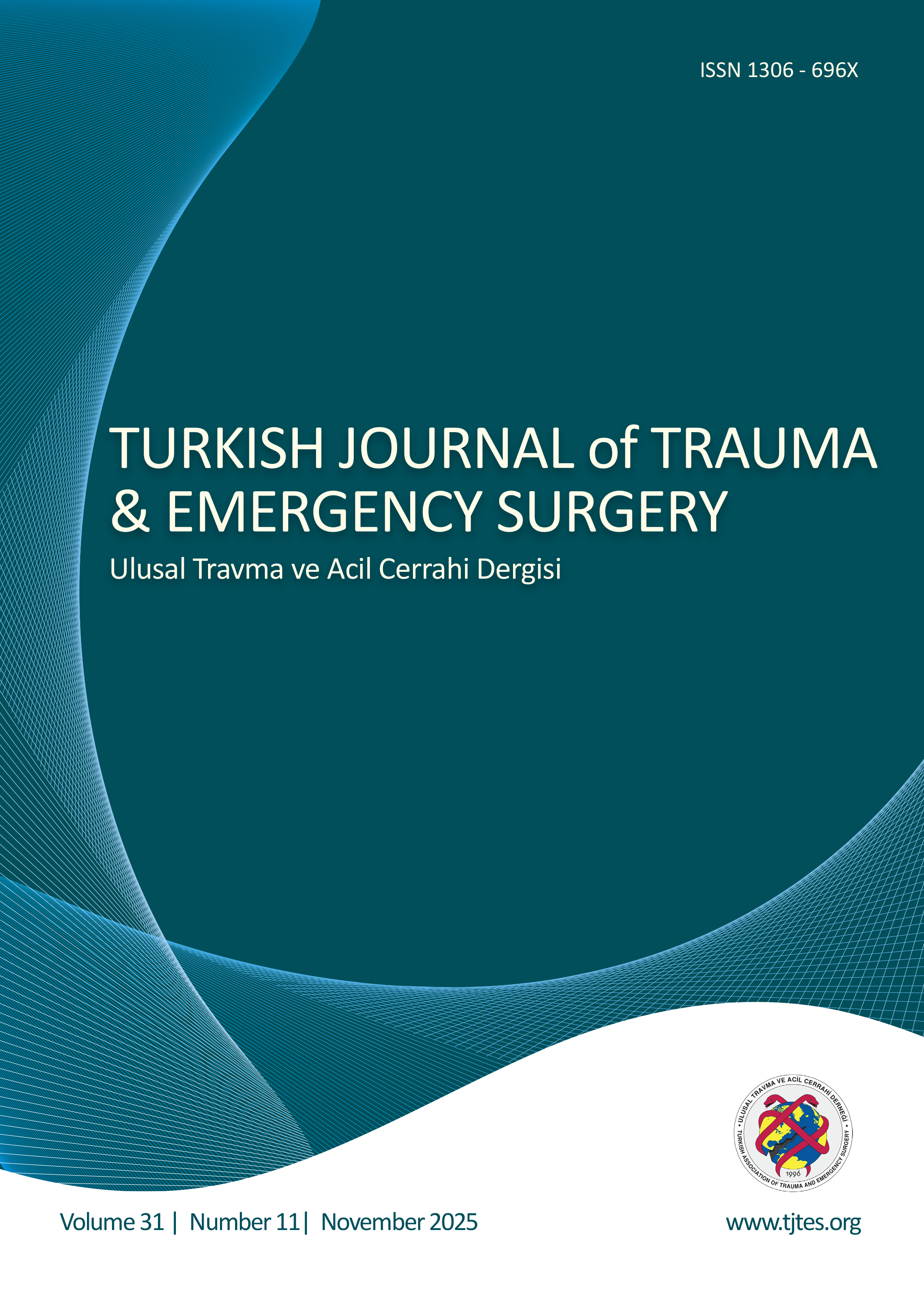Hızlı Arama
Sıçanlarda deneysel travmatik beyin hasarı modelinde adrenomedullinin nöroprotektif etkileri
Gökçen Emmez1, Erkut Baha Bulduk2, Zuhal Yıldırım31Gazi Üniversitesi Tıp Fakültesi, Anestezi ve Reanimasyon Anabilim Dalı, Ankara2Atılım Üniversitesi Tıp Fakültesi, Beyin ve Sinir Cerrahisi Anabilim Dalı, Ankara
3Etimesgut Halk Sağlığı Laboratuvarı, Ankara
AMAÇ: Travmatik beyin hasarı beyne; hücre ölümü, kan-beyin bariyerinin bozulması ve iskemi dahil olmak üzere çeşitli şekillerde zarar verir. Bu çalışmada, sıçan modellerinde kafa travması sonrası adrenomedüllinin (AM) oksidatif stres ve enflamasyon üzerindeki etkilerini araştırdık. GEREÇ VE YÖNTEM: On sekiz erkek yetişkin Wistar-Albino sıçan rastgele üç gruba (n=6) ayrıldı. Kontrol (C) grubuna herhangi bir travma uygu-lanmadı. Travma grubundaki sıçanlara Marmarau travma modeline uygun travma uygulandı. Adrenomedüllin tedavi grubundaki sıçanlara ise travma grubuna ek olarak travma sonrası 12 μg/kg ip adrenomedüllin uygulandı. Tüm gruplardaki sıçanlar yedi gün boyunca takip edildi ve sonrasında sakrifiye edilip beyin dokuları ve kan örnekleri alındı.
BULGULAR: Travma grubunda hem doku hem de serum MDA, TNF-α ve IL-6 seviyeleri kontrol grubuna göre anlamlı olarak arttı (p<0.05). AM ile tedavi edilen grupta, serum TNF-α seviyeleri travma grubuna göre anlamlı olarak azaldı (p<0.05). Travma grubunda hem doku hem de serum GSH düzeyleri kontrol grubuna göre anlamlı olarak azaldı (p<0.05). Travma grubunda serum vit D3 seviyeleri kontrol grubuna göre anlamlı olarak azaldı (p<0.05). AM ile tedavi edilen grupta, hem doku hem de serum GSH seviyeleri, travma grubuna göre anlamlı olarak arttı (p<0.05).
TARTIŞMA: Bu sonuçlar AMnin bir sıçan modelinde travmatik beyin hasarı üzerinde nöroprotektif etkilere sahip olduğunu göstermektedir.
Anahtar Kelimeler: Adrenomedüllin, antioksidan; enflamasyon; oksidatif stres; travmatik beyin hasarı.
Neuroprotective effects of adrenomedullin in experimental traumatic brain injury model in rats
Gökçen Emmez1, Erkut Baha Bulduk2, Zuhal Yıldırım31Department of Anesthesiology and Reanimation, Gazi University Faculty of Medicine, Ankara-Turkey2Department of Neurosurgery, Atılım University Faculty of Medicine, Ankara-Turkey
3Etimesgut Public Health Laboratory, Ankara-Turkey
BACKGROUND: Traumatic brain injuries cause damages in the brain in several ways, which include cell death because of edema, disruption of the bloodbrain barrier, shear stress, and ischemia. In this study, we investigated the effects of adrenomedullin (AM) on oxidative stress and inflammation after head traumas in a rat model.
METHODS: Eighteen male adult Wistar albino rats were randomized into three groups (n=6). No traumas were applied to the con-trol (C) group. Traumas were applied in line with Marmarau trauma model in the trauma group. The rats in the AM treatment group were treated with post-traumatic 12 μg/kg i.p. AM in addition to the trauma group. The rats were followed for 7 days in all groups and were then sacrificed. Brain tissues and blood samples were taken.
RESULTS: In the trauma group, both tissue and serum MDA, TNF-α, and IL-6 levels were significantly increased compared to the control group (p<0.05). In the AM-treated group, serum TNF-α levels were significantly decreased compared to the trauma group (p<0.05). In the trauma group, both tissue and serum GSH levels were significantly decreased compared to the control group (p<0.05). In the trauma group, serum Vitamin D3 levels were significantly decreased compared to the control group (p<0.05). In the AM-treated group, both tissue and serum GSH levels were significantly increased compared to the trauma group (p<0.05).
CONCLUSION: These results indicate that AM has neuroprotective effects on traumatic brain injury in a rat model.
Keywords: Adrenomedullin, inflammation; oxidative stress; traumatic brain injury.
Makale Dili: İngilizce





